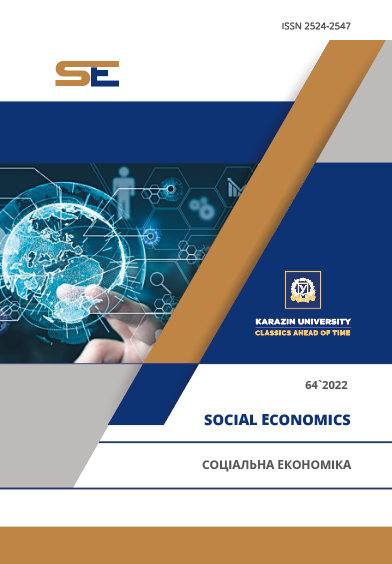LEARNING STYLES ISSUES ON STUDENT PERFORMANCE IN THE FLIPPED CLASSROOM
Abstract
Many researchers point out that in the context of the digital transition, which is rapidly introducing all sectors of society, a flipped classroom is a necessary method to implement an outcome-based learning curriculum at the tertiary level to train prospective professionals who meet the needs of employers. Therefore, we believe that the basis for the successful introduction of learning is, firstly, to diagnose the student's learning style, and secondly, to determine the student's learning outcome in the 21st century based on 4Cs; being proficient communicators, creators, critical thinkers, and collaborators. By doing this, 41 second-year students from two different groups studying in Business Administration at Mandakh university were selected non-randomly and divided into three groups on the basis of their learning styles. The EFL learners’ task performance is evaluated with the criteria (information and discovery, idea design, innovation, delivering an oral presentation, engaging in conversations and discussions) on the basis of 4Cs principles as variables. According to the data, Visual learners' critical thinking, Kinesthetic learners' creativity, and Audio learners' communication skills are dominant. Overall, we expect that the need for new pedagogical approaches in English classrooms to enhance students' essential skills in the 21st century, the flipped learning approach where the direct instruction in class-time and homework are reversed, has recently received significant attention from many language teachers, educators, and researchers. In today’s academic world, one of the learning environments that have gained acceptance is the learning and teaching management system. A learning management system, also known as a virtual learning environment, course management system, or learning platform, is a collection of software tools and Web-based technology that support the organization, administration, delivery, monitoring, and management of online education and training programs as well as the evaluation of particular learning processes.
Downloads
References
Amresh, A., Carberry, A. R., & Femiani, J. (2013). Evaluating the effectiveness of flipped classrooms for teaching cs1. 2013 IEEE Frontiers in Education Conference (FIE), (pages. 733–735). doi: https://doi.org/10.1109/FIE.2013.6684923
Abbas Pourhossein Gilakjani, S. M. (2011). The Effect of Visual, Auditory, and Kinaesthetic Learning Styles on Language Teaching. Pinang, Malaysia.
Bergmann, J., & Sams, A. (2014). Flipped learning: Gateway to student engagement. International Society for Technology in Education. International Society for Technology in Education: Eugene, Oregon and Washington, DC, 2014.
Cohen, A. D. (2003). The learner’s side of foreign language learning: where do styles, strategies, and tasks meet? International Review of Applied Linguistics in Language Teaching, 41, 279-291. doi: https://doi.org/10.1515/iral.2003.013
Cooper, B. (2021). simpleK12. Retrieved from https://www.simplek12.com/learning-theories-strategies/4cs-21st-century-skills/.
Cunningham, U. (2016). Language pedagogy and non-transience in the flipped classroom. Journal of Open, Flexible and Distance Learning, 20 (1), 44-58.
Curry, L. (April, 1983). An Organisation of Learning Styles Theory and Constructs.
Diaz, C. (July, 1992). Multicultural Education for the 21 st century.
Mason, G. S., Shuman, T. R., & Cook, K. E. (2013). Comparing the Effectiveness of an Inverted Classroom to a Traditional Classroom in an Upper-Division Engineering Course. IEEE Transactions on Education, 56, 430–435. doi: https://doi.org/10.1109/te.2013.2249066
Gilakjani, A. P. (February, 2012). Visual, Auditory, Kinaesthetic Learning Styles and Their Impacts on English Language Teaching. Lahijan, Iran. doi: https://doi.org/10.5296/jse.v2i1.1007
Gulnaz, F. (2018 оны December). Learning Styles: Preferred Learning Choices and Behaviors of Saudi Male and Female EFL Learners. Saudi Arabia. doi: https://doi.org/10.22555/joeed.v5i2.1847
Halvorsen, A. (2018). 21st Century Skills and the “4Cs” in the English. Oregon.
DeSantis, J., Van Curen, R., Putsch, J., & Metzger, J. (2015). Do students learn more from a flip? an exploration of the efficacy of flipped and traditional lessons. Interactive Learning Research, 26, 39–63.
Moffett, J. & Mill, A. C. (2014). Evaluation of the flipped classroom approach in a veterinary professional skills course. Advances in medical education and practice, 5, 415. doi: https://doi.org/10.2147/amep.s70160
Ziegelmeier, L. B., & Topaz, C. M. (2015). Flipped calculus: A study of student performance and perceptions. PRIMUS, 25, 847–860. doi: https://doi.org/10.1080/10511970.2015.1031305
Bradford, M., Muntean, C., & Pathak, P. (2014). An analysis of flip-classroom pedagogy in first-year undergraduate mathematics for computing. Frontiers in Education Conference (FIE), (pages: 1–5). doi: https://doi.org/10.1109/fie.2014.7044072
Mehring, J. (2015). An exploratory study of the lived experiences of Japanese undergraduate EFL. Unpublished Doctoral Dissertation. Pepperdine University: Malibu. doi: https://doi.org/10.17759/jmfp.2015040208
Millsaps, J. (March 2019). Alo7love to learn. Retrieved from https://blog.alo7.com/esl-teaching-strategies-auditory-learners/.
Milman, N. B. (2012). The flipped classroom strategy: What is it and how can it best be used? Distance Learning, 9.
Nadezhda, P. (March 2013). ESP Teaching at the institutions of higher education in modern Russia: Problems and perspectives. Balakovo, Russia. doi: https://doi.org/10.2139/ssrn.2232203
Pardede, P. (February 2020). Integrating the 4Cs into EFL Integrated Skills Learning. Journal of English Teaching, 6 (1). doi: https://doi.org/10.33541/jet.v6i1.190
Parnrod, U. (February 2018). Relationships between Students' Learning Style and Their Academic Achievement for English Courses. Bangkok, Thailand.
Radhwan Hussein Ibrahim, D.-A. H. (2016). Assessment of visual, auditory, and kinesthetic learning style among undergraduate nursing students. doi: https://doi.org/10.14419/ijans.v5i1.5124
Saleh, D. S. (October 2019). 4Cs in the EFL Classroom.
Saleh, S. E. (October 2019). 21-century skills in the EFL classroom: Conceptions, Challenges and Implementation. Libya.
Sohaya, E. M. (2020). Blended Learning and 4Cs: Trends in the New Normal Life of Education, Globalization and the Next Decade. Medan, Indonesia. doi: https://doi.org/assehr.k.201124.019
Stone, B. B. (2012). Flip your classroom to increase active learning and student engagement. International Annual Conference on Distance Teaching & Learning, Madison.
Syofyan, R. (2018). The Impact of Visual, Auditory, and Kinesthetic Learning Styles on Economics. Padang, Indonesia. doi: https://doi.org/piceeba-18.2018.17
Tan Xin Yu, W. M. (September 2019). Integration of 21st Century Learning Skills (4C Elements) in Interventions to Improve English Writing Skill Among 3K Class Students. Malaysia. doi: https://doi.org/10.11114/ijce.v2i2.4498
Xu, W. (2011). Learning Styles and Their Implications in Learning and Teaching. China.
Zahra, R., & Mohsen, Sh. (2021). The Effect of Flipped Classroom on Iranian ESP Students’ Vocabulary. International Journal of Foreign Language Teaching & Research, 9.




